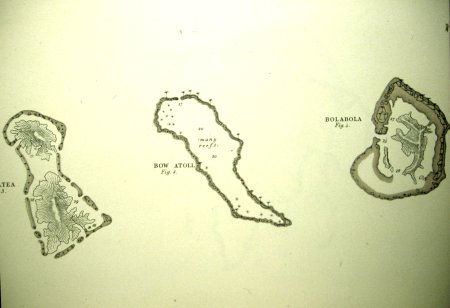

Waterhouse took charge of the still living mammals (and the beetles) and published his Mammalia between 1846 and 1848.
The famous birds artist John Gould took the birds for his account. He soon found out that the finches formed a unique group of related species, whereas Darwin considered them as totally different birds.
Know more?
Richard
Owen
His first book after his Journal was thus a geological one, viz. on the way in which coral islands and atolls come into existence (1842). His explanation for atolls still applies: a volcano arises above the water surface; along the beach a coral reef is formed. The island is sinking slowly, but the coral reef is growing upward in order to stay in the zone with sunlight. The reef becomes a barrier reef parallel to the shore and the distance to the shore is increasing. At last the island has disappeared completely and only the ringshaped coral reef is projecting out of the water.
Picture: a page from his book.
Know more?
Atolls: Video